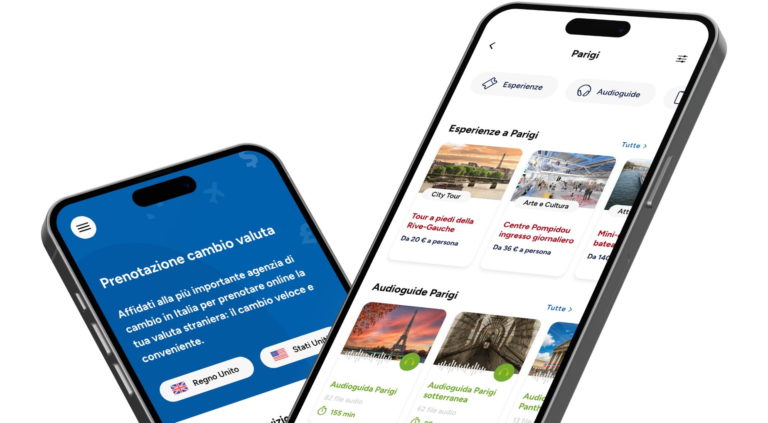In the world of international travel, connectivity has now become a daily and essential need. Whether it’s consulting a map, booking a transfer, translating a restaurant menu, or simply sharing photos on social media, having a stable and secure connection is crucial for anyone traveling abroad. But which solution is more convenient? Is it better to rely on traditional roaming or opt for an eSIM? In this article, we’ll clearly and practically analyze the differences, advantages, and disadvantages, costs, and ideal usage situations for both options.
Connectivity while traveling: an essential need
In recent years, the very concept of travel has changed. If once a lack of connection was almost expected, today those traveling for business or leisure expect to stay connected at all times, wherever they are. And not just for work reasons: bookings, online check-ins, transportation schedules, weather updates, instant translations, and digital payments have all become an integral part of the travel experience.
Technology has therefore turned mobile connectivity into a true essential service, but often costs can become an obstacle if the most suitable solutions aren’t chosen.
And to meet this need, there are now different options for staying connected abroad, including traditional roaming and the more recent travel eSIMs. Before deciding which option is best, let’s take a detailed look at how both solutions work.
What is traditional roaming?
Roaming is the service that allows you to use your national SIM to make calls, send SMS, and browse the internet even when you’re abroad, using local operator networks. Essentially, the SIM automatically connects to a foreign partner operator of your national provider.
Within the European Union, roaming is generally affordable for European residents thanks to the “Roam Like at Home” regulation. However, European travelers visiting non-EU countries, as well as non-European travelers entering the EU, may still face high roaming costs, unclear pricing, data caps, and unexpected charges.
Disadvantages of traditional roaming:
- High costs, especially outside Europe.
- Complex and unclear rates.
- Unexpected charges upon return.
- Speed limitations after data thresholds are exceeded.
Advantages of traditional roaming:
- Automatic activation, no special setup required.
- You keep your main number active.
eSIM: how the new technology works
But how does eSIM work? An eSIM (embedded SIM) is a virtual SIM integrated directly into the device. There’s no need to physically insert a SIM card: you simply download the new operator’s profile onto your smartphone, and the line is immediately active.
More and more devices today are compatible with this technology, which is spreading rapidly thanks to its convenience.
Disadvantages of the International eSIM:
- Limited compatibility with very old devices.
- Requires an internet connection for initial activation.
- Not all traditional operators support eSIM yet.
Advantages of the International eSIM:
- Immediate activation, even online.
- No physical SIM card to insert or replace.
- Ability to manage multiple profiles on the same device.
- Access to more affordable local data plans.
- Full cost control and maximum transparency.
International eSIM: the smart solution for travelers
More and more travelers are choosing the international eSIM to stay connected abroad without complications. Thanks to dedicated plans for each country or multiple destinations, you can have a data package ready upon arrival, avoiding long searches for local shops or complicated activations.
Some of the destinations where international eSIM is especially convenient include: United States, Canada, Japan, South Korea, United Arab Emirates, Middle East, Thailand, Indonesia and Southeast Asia, Australia, New Zealand, and South America.
In these areas, traditional roaming often comes with prohibitive costs, while an eSIM plan allows for continuous browsing, with fixed and transparent costs.
Forexchange: currency exchange and travel esim for hassle-free travel
Forexchange, always specialized in services for travelers, offers not only commission-free currency exchange online, but also the possibility to easily activate Forexchange Travel eSIMs.
Thanks to this innovative solution, you can choose in advance the most suitable data plan for your destination and trip length, activate the eSIM in just a few minutes — either before departure or upon arrival — and easily manage your data usage while traveling. This way, you always have full control over your expenses, avoiding unexpected costs or unpleasant surprises on your bill upon return. The entire process is simple, fast, and fully digital, designed for those who want to travel worry-free and with maximum transparency.
The future of travel connectivity is digital
The spread of eSIMs is set to grow in the coming years. More and more mobile devices are eSIM-ready, and the advantages in terms of ease of use, quick activation, and cost savings are clear for frequent travelers.
With Forexchange Travel eSIMs, traveling becomes even easier: just a few clicks before departure and you’re ready to navigate, book, explore, and share your journey with complete freedom and peace of mind.
To discover all available plans and start your trip fully connected, visit the Forexchange Travel eSIM page.









